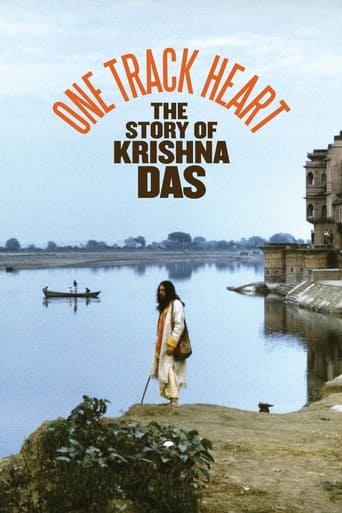Howard Schumann
During the course of three years, director Jeremy Frindel traveled with Kirtan singer Jeremy Kagel, now known to the world as Krishna Das, interviewing many of his colleagues and tapping into KDs strengths, not only as a Grammy Award winning singer, but also as a teacher, healer, and a man of depth and compassion. The result is the documentary One Track Heart, not an in-depth assessment of the artist, his music or his life, but a means to introduce him to a wider audience who may be unfamiliar with his music and life story. The film traces his life from being a rock singer in his teens in the band that would become Blue Oyster Cult to becoming the best-selling New Age artist of all time, having sold over 300,000 records.Interviewed are author and teacher Ram Dass, Grammy-winning producer Rick Rubin, best-selling author Sharon Salzburg, and Pulitzer Prize nominee Daniel Goleman. Kagel, influenced by Ram Dass, sold all of his possessions and moved to the Himalayan Mountains in India to study with Ram Dass' teacher Neem Karoli Baba and took on the name Krishna Das. The film describes his devotion to the guru who led the way for him and transformed his life and his subsequent depression and drug abuse when Maharaj-ji died in 1973, and the struggle with his demons that led to his decision to introduce Hindu Bhakti yoga to the West.The film offers a sense of the resilience of the man and the power of his ability to capture an audience and hold them in his spell. As shown in the film, there is joy and happiness at his concerts (I'm going to one on June 27th here in Vancouver), labeled by the usual cynical critics as being "blissed out," something perhaps they should try. For those unfamiliar with Kirtan singing, In Hindu devotional traditions, Kirtan practice involves the call and response chanting of hymns or mantras, performed with instruments such as the Harmonium and tablas and cymbals. The chants often repeat the names of Hindu gods as a means of opening the heart, beginning slowly, and then building up to a peak of ecstasy. As Krishna Das has said in his Pilgrim of the Heart audio series: "The words of these chants are called the divine names and they come from a place that's deeper than our hearts and our thoughts, deeper than the mind. And so as we sing them they turn us towards ourselves, into ourselves. They bring us in, and as we offer ourselves into the experience, the experience changes us. These chants have no meaning other than the experience that we have by doing them. They come from the Hindu tradition, but it's not about being a Hindu, or believing anything in advance. It's just about doing it, and experiencing. Nothing to join, you just sit down and sing." As the chorus in Hou Hsiao Hsien's Good Men, Good Women sings, "When yesterday's sadness is about to die. When tomorrow's good cheer is marching towards us. Then people say, don't cry. So why don't we sing?" Yes, why don't we?
collingreen
I saw this film at the Santa Barbara International Film Festival. I was soooo surprised to what I had just viewed. A friend of mine who had little or no idea who he was became impressed with him. I have heard his music at a yoga studio a couple times. As well, as downloaded it but had no idea about his life and how he came to his music. He was a member of a musical band that is world famous and left to discover himself. All in, all a great film. By the time that the lights had come back on I had a renewed appreciation of him, and his work I would suggest this film to anyone who has heard his music. I am planning to purchase this film on Blue Ray. It is at times very beautiful to view.




